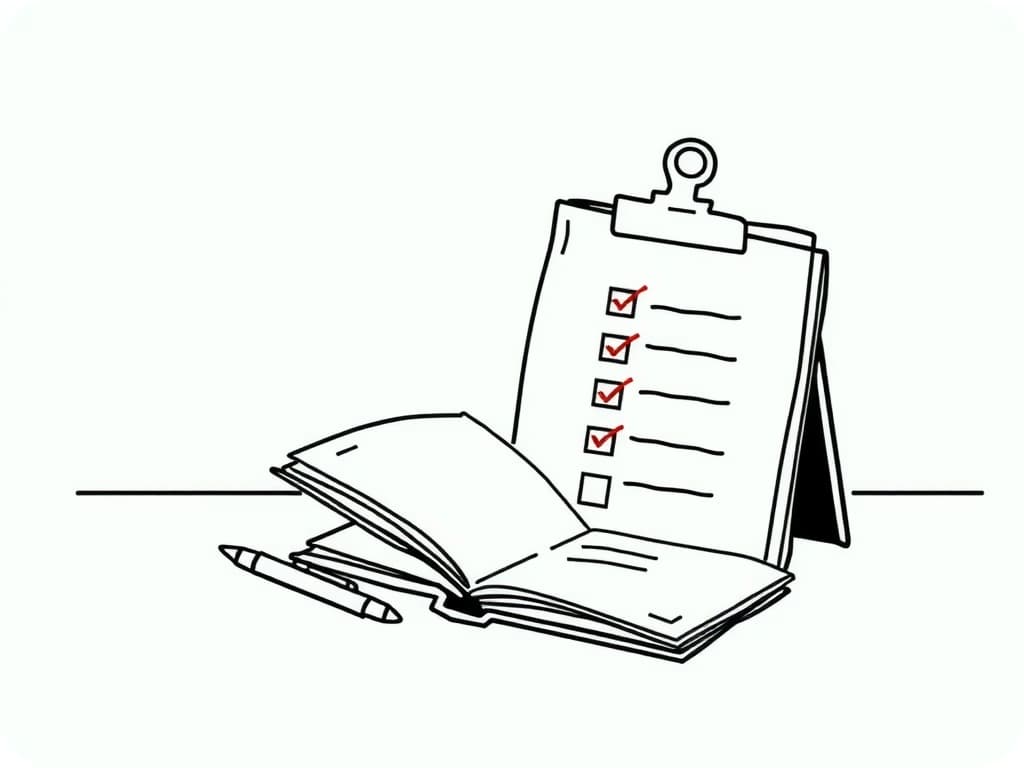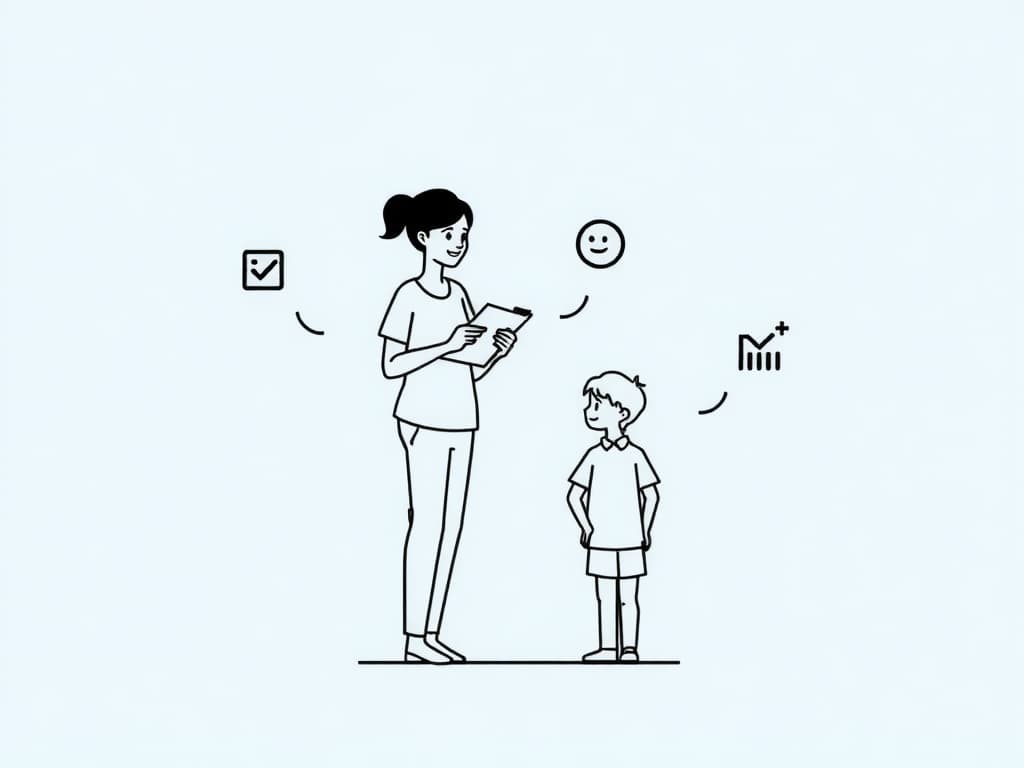Parent Co-Signature RBT Notes: Simple ABA Parent Guide

When navigating your child's ABA therapy, you receive detailed reports after each session. These notes are a key connection between therapy and daily life, helping you track progress and reinforce learning at home. However, being asked for a parent co-signature on RBT notes can feel confusing. It simply means you are confirming the session occurred and that you’ve reviewed the details. This is often a requirement from your insurance provider, not a clinical judgment of the therapy itself.
This guide will clarify the process for families of autistic children in ABA therapy. We will cover the purpose of your signature, how it differs from a clinician's approval, and a stress-free way to review the notes.
- The basics of what a parent co-signature means and why it is requested.
- Key differences between a parent signature and BCBA oversight.
- A step-by-step framework for reviewing RBT notes.
- Answers to common concerns in the FAQ section.
What Is Parent Co-Signature on RBT Notes?
A parent co-signature on RBT notes means that you, as the legal guardian, add your signature to the session records created by the Registered Behavior Technician (RBT). This action is not about clinically approving the therapist's work. Instead, it is an administrative step, often required by insurance companies or state programs.
According to a white paper from the Council of Autism Service Providers (CASP), some payers require this to support billing and prevent documentation errors. For instance, some insurance plans may require your signature to confirm details like the date, time, and skills targeted during the session. This practice ensures transparency between your family and the therapy team.
Think of it as a receipt. You are verifying that the service took place as described, without needing to analyze every data point. Many providers use secure apps for remote signing, making the process convenient. This small step helps build trust and keeps you involved in your child's care.
Why Do Parents Sign ABA Session Notes?
Signing ABA session notes helps build a strong partnership in your child's therapy. It confirms you have seen the session's highlights, such as the activities that took place and your child's responses. This acknowledgment is valuable for home practice, where you can reinforce developing skills like communication or social interactions.
Research shows that when parents actively engage with therapy notes, it can significantly improve family life. Your signature is more than paperwork; it is a tool to stay informed and contribute to your child's progress by discussing observations with the therapy team.
Payers often require a signature for compliance, as noted in payer guidelines. It verifies service delivery without implying you are responsible for clinical oversight. This step fosters collaboration, helping therapists adjust treatment plans based on your input about behaviors and progress at home.
Parent Signature vs. BCBA Co-Signature: What's the Difference?
Not all signatures on ABA notes have the same function. Your parent signature is an acknowledgment. You confirm that you have reviewed logistical details like the session's duration and the targets that were addressed. It is an administrative task tied to insurance rules and does not mean you approve the clinical methods used.
In contrast, a BCBA co-signature from a Board Certified Behavior Analyst provides clinical oversight. The BCBA reviews the notes for accuracy, ensures the techniques align with the treatment plan, and signs off on the data's integrity. According to the Ethics Code for Behavior Analysts, this is required for ethical and professional reasons, focusing on evidence-based practices.
For example, your signature confirms the session happened, while the BCBA’s signature ensures goals were tracked correctly. Understanding this difference helps you focus on the big picture and let clinicians manage the clinical details.
A Simple Framework for Parents Reviewing RBT Notes
Reviewing session notes does not have to be a chore. Approach it by scanning for key facts that can help you support your child at home. Here is a straightforward, four-step framework based on best practices from the Association for Behavior Analysis International.
- Verify the basics: Look at the date, time, and session length. Does it match your schedule? This confirms the session occurred.
- Note the targets: Identify the main skills worked on, like turn-taking or following instructions. Check your child’s performance without getting lost in the data.
- Look for home tips: Scan for suggestions from the RBT, such as practicing a new word during dinner. This helps bridge therapy with daily life.
- Add your observations: Before signing, feel free to jot down any thoughts, like "My child used this skill at the park today." This provides valuable feedback to the team.
This method should only take 5-10 minutes per note. If any details are confusing, ask your BCBA for clarification. A study from Walden University found that this kind of parental involvement can reduce stress related to low confidence.
Addressing Common Parent Concerns About Parent Co-Signature on RBT Notes
Many parents worry that signing makes them liable for therapy outcomes or that the notes will be too complex. Rest assured, co-signing is for confirmation, not liability. Legal experts emphasize it is a record-keeping step, not a judgment of your parenting.
If you are short on time, many providers offer electronic signing through secure apps. If you want a deeper understanding of the notes, ask your provider about family training sessions, which can boost your confidence in using ABA strategies at home. Avoid confusion by asking questions upfront. For example, confirm if every note needs signing or only weekly summaries.
Frequently Asked Questions
Do all ABA programs require parent co-signatures on RBT notes?
No, the requirement varies by the insurance provider or state. Some payers mandate it for verification, while others only require the RBT or BCBA signature. The Council of Autism Service Providers notes it's payer-specific, not a universal rule from the BACB.
Why is my signature needed if I'm not a clinician?
Your signature is primarily for administrative confirmation. It verifies that the session took place and that you have been informed, which supports billing and transparency as required by some payer guidelines. It helps you stay involved without needing clinical expertise.
What if I disagree with something in the RBT notes?
You should discuss any disagreements with your BCBA before signing. They can provide clarification or make necessary updates. Open communication is proven to improve family outcomes, and your input is valuable for making adjustments.
Can I sign notes electronically, and is it secure?
Yes, many providers use HIPAA-compliant platforms that allow for secure, remote signing. Always confirm the provider’s privacy and security measures to ensure your information is protected.
How does parent involvement in notes affect my child's progress?
Active review helps you reinforce skills at home, leading to better generalization. A 2022 Walden University study found that parent involvement boosts self-efficacy and reduces stress, enhancing overall therapy success.
What should I do if I can't review notes right after a session?
Most providers allow a short delay, such as 24-48 hours. It is best to communicate with your team. While notes must be timely per the BACB Ethics Code, flexibility often exists for families.
In summary, the parent co-signature on RBT notes is a simple way to stay connected to your child's ABA journey. It confirms sessions and fosters teamwork without adding pressure. This practice highlights your important role in reinforcing progress and is backed by evidence that engaged families see real improvements. Remember, it is about partnership, not perfection.
Popular in ABA Session Notes & Tools
- 1
RBT Supervision Documentation: 2025 BACB Guide & Templates
1,5899 min read - 2
Master ABA Medical Necessity Documentation: Avoid Denials
7599 min read - 3
Master ABA SOAP Notes: Guide for RBTs & BCBAs
6819 min read - 4
ABA Documentation Best Practices for RBTs: Essential Tips
6625 min read - 5
Guide to ABA Progress Reports for Insurance Reauthorization
5348 min read
Popular in ABA Session Notes & Tools
- 1
RBT Supervision Documentation: 2025 BACB Guide & Templates
1,5899 min read - 2
Master ABA Medical Necessity Documentation: Avoid Denials
7599 min read - 3
Master ABA SOAP Notes: Guide for RBTs & BCBAs
6819 min read - 4
ABA Documentation Best Practices for RBTs: Essential Tips
6625 min read - 5
Guide to ABA Progress Reports for Insurance Reauthorization
5348 min read
Related Resources
Explore more helpful content on similar topics

ABA Documentation Best Practices for RBTs: Essential Tips
Struggling with ABA documentation best practices for RBTs? This FAQ covers RBT session notes, ABC recording tips, ethical standards, and compliance with BACB, HIPAA, and insurance requirements to streamline your workflow and ensure accuracy.

RBT Supervision Documentation: 2025 Compliance Guide
Master RBT supervision documentation with this step-by-step guide to compliant notes. Learn BACB requirements, key elements for supervision notes ABA, and prep for 2026 changes to stay certified and excel in ABA.

BIP Documentation RBT: Step-by-Step Guide for Accurate Notes
Learn essential BIP documentation RBT strategies for ABA therapy. Master behavior intervention plan notes, BACB-compliant templates, and common pitfalls to boost client progress and compliance. Discover step-by-step guides now!